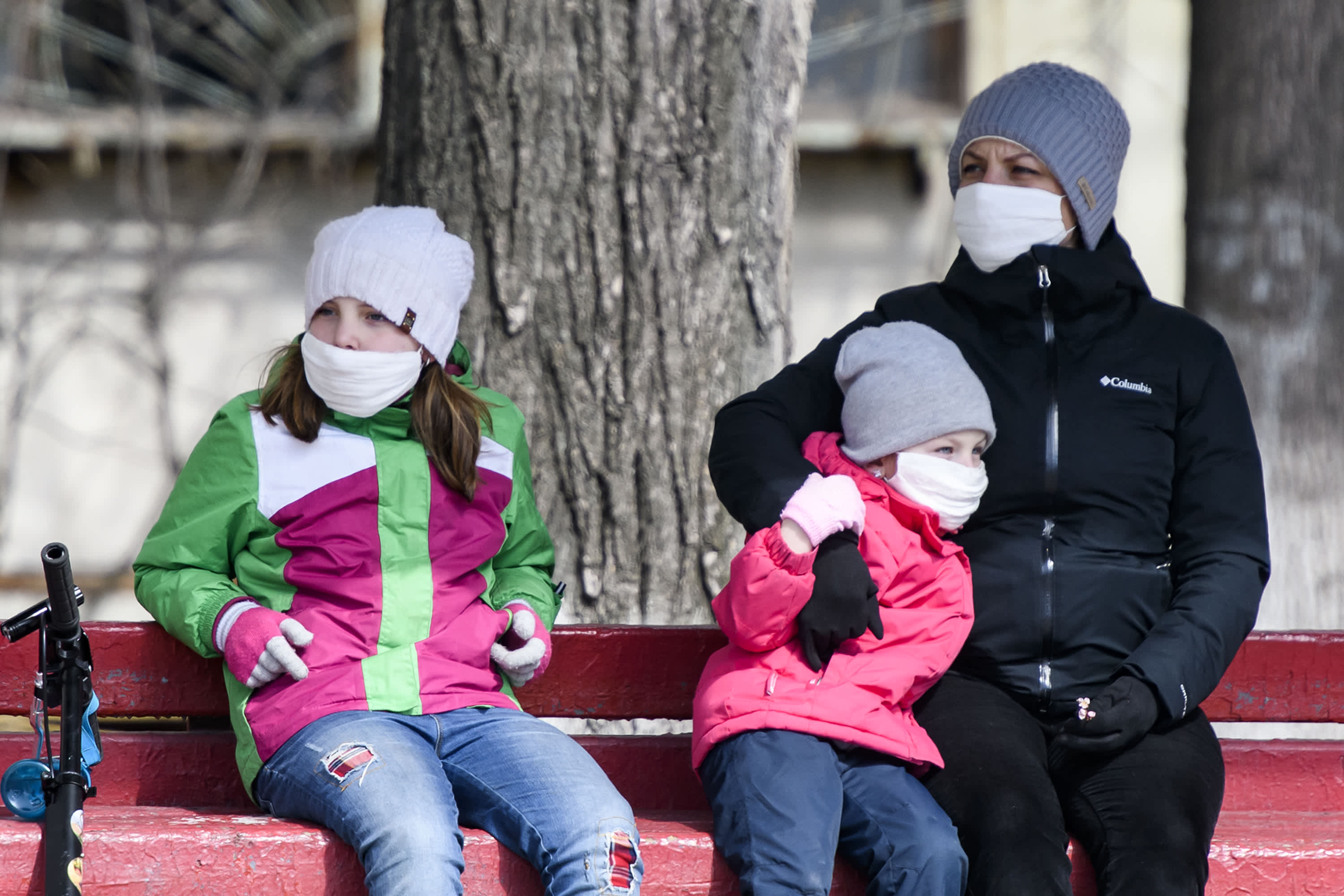
Woman with children wearing protective masks as a preventive measure against the coronavirus COVID-19 on street in Kyiv, Ukraine on March 31, 2020.
Maxym Marusenko | NurPhoto via Getty Images
Some children have been hospitalized or worse after becoming infected with the coronavirus, the Centers for Disease Control and Prevention said Monday. At least three children have died.
In its first major report looking at the COVID-19 pandemic’s impact on children, the CDC analyzed confirmed cases from all 50 states, the District of Columbia and four U.S. territories that occurred between Feb.12 and April 2. U.S health officials examined 149,760 cases where age was known and found that 2,572 of the cases, or 1.7%, were younger than 18.
At least 73% of the pediatric patients had symptoms such as fever, cough or shortness of breath, according to the CDC’s findings. About 5.7% of the children, or the 20% of those for whom hospitalization status was known, were hospitalized, the agency said.
Three deaths were reported during this time period, though they are suspected of having COVID-19, public officials are still working to confirm whether that was the likely cause of the deaths.
“These data support previous findings that children with COVID-19 might not have reported fever or cough as often as do adults,” the CDC wrote in its report. “Whereas most COVID-19 cases in children are not severe, serious COVID-19 illness resulting in hospitalization still occurs in this age group.”
The CDC said the findings were in line with data from researchers in China, where the virus emerged and cases have reached more than 82,000 as of Monday morning, according to data compiled by Johns Hopkins University. There are more than 338,000 cases in the U.S., according to Johns Hopkins.
A recent study, which was published online in the journal Pediatrics, looked at 2,143 cases of children with confirmed or suspected COVID-19 that were reported to the Chinese CDC between Jan. 16 and Feb. 8.
That study found that a number of children in China have developed severe or critical disease and one child has died. More than 90% of the cases were asymptomatic, mild or moderate cases. However, nearly 6% of the children’s cases were severe or critical, compared with 18.5% for adults.
Early in the outbreak, researchers and infectious disease experts said the virus appeared to be sparing children while being particularly severe in the elderly and those with underlying health conditions. However, one researcher noted that the apparent lack of children among confirmed coronavirus cases could also be because they are getting infected but developing more mild symptoms that aren’t being reported to local authorities.
“The data is coming out in so many places and so many forms,” Marc Lipsitch, a professor of epidemiology at the Harvard School of Public Health, said in February.
The differences in symptoms among different age groups are seen in other respiratory illnesses as well. The seasonal flu, which infects millions in the U.S. each year, is usually more severe in adults than children.
Thousands of children are hospitalized each year in the U.S. from the flu, but death is rare, according to the CDC. However, between 50% and 70% of flu-related hospitalizations in the U.S. occur in people 65 years and older, and between 70% and 85% of deaths occur in the same age group, the CDC says.
Symptoms of the coronavirus can include a sore throat, runny nose, diarrhea, fever or pneumonia and can progress to multiple organ failure or even death in some cases, according to the World Health Organization.
The CDC reiterated Monday that Americans practice social distancing, writing “everyday preventive behaviors remain important for all age groups as patients will less serious illness and those without symptoms likely play an import role in disease transmission.”
Correction: The CDC reiterated Monday that Americans practice social distancing. An earlier version misstated the day.



